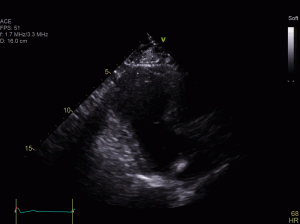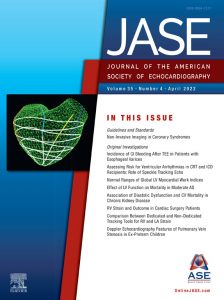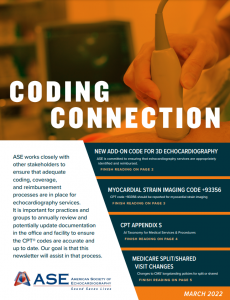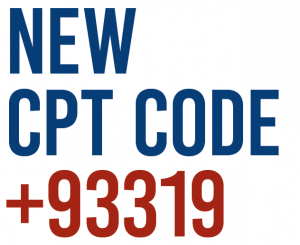The application process for a new funding opportunity of up to $1.1M USD for research is now open. This ASE/ASEF grant opportunity is aimed at examining the impact of embedded echocardiography report interventions on referral patterns and outcomes in patients newly diagnosed by echocardiography with severe aortic stenosis (AS). The presence of severe AS and other forms of valvular heart disease in patients may affect their risk of stroke and mortality. Considering the growth in numbers of patients presenting with AS, ASE is concerned that the diagnosis, referral, and treatment for these patients needs to be optimized to lower overall healthcare costs and increase positive patient outcomes. This study in particular will examine the role of a primary care provider and referral patterns to a cardiac specialist for patients presenting with severe AS, though the study may be expanded to include other forms of severe valve disease.
One grant will be awarded by ASE, through its Foundation, with funding support from Edwards Lifesciences. ASE members will be given priority should the merits of the grant applications be equal. Application closes August 31, 2022 at 5:00 PM ET.

 The CASE Editorial team is excited to announce the latest addition to the CASE homepage, Sonographer Sound-Off. This new interactive element provides an opportunity for sonographers to share tips and tricks they have learned in everyday practice. Congratulations to Agatha Kwon, BSc (Hon), GradDipCardiacUltrasound, The Royal Brisbane and Women’s Hospital, Queensland, Australia, for supplying the images and text for the INAUGURAL Sonographer Sound-Off.
The CASE Editorial team is excited to announce the latest addition to the CASE homepage, Sonographer Sound-Off. This new interactive element provides an opportunity for sonographers to share tips and tricks they have learned in everyday practice. Congratulations to Agatha Kwon, BSc (Hon), GradDipCardiacUltrasound, The Royal Brisbane and Women’s Hospital, Queensland, Australia, for supplying the images and text for the INAUGURAL Sonographer Sound-Off.  The
The 
 ASE is committed to providing our members with the tools and resources needed to ensure they are coding accurately, maintaining compliance with all requirements, and maximizing appropriate reimbursements.
ASE is committed to providing our members with the tools and resources needed to ensure they are coding accurately, maintaining compliance with all requirements, and maximizing appropriate reimbursements. The
The  Effective January 1, 2022, ASE was proud to see the establishment of Current Procedural Terminology (CPT) add-on code +93319.
Effective January 1, 2022, ASE was proud to see the establishment of Current Procedural Terminology (CPT) add-on code +93319.